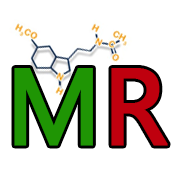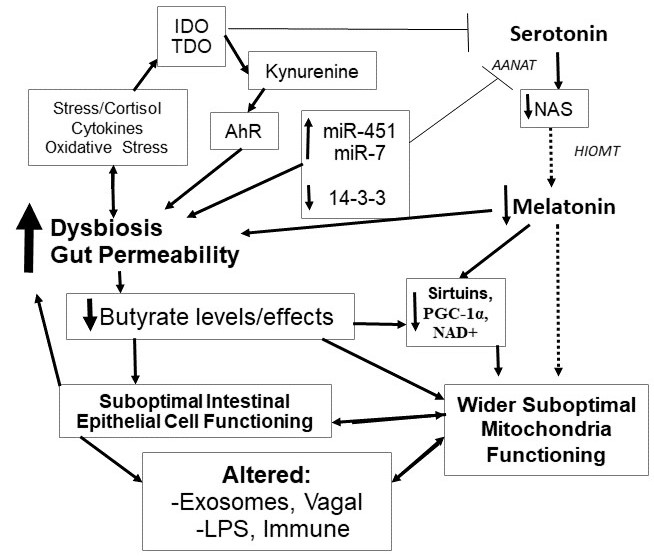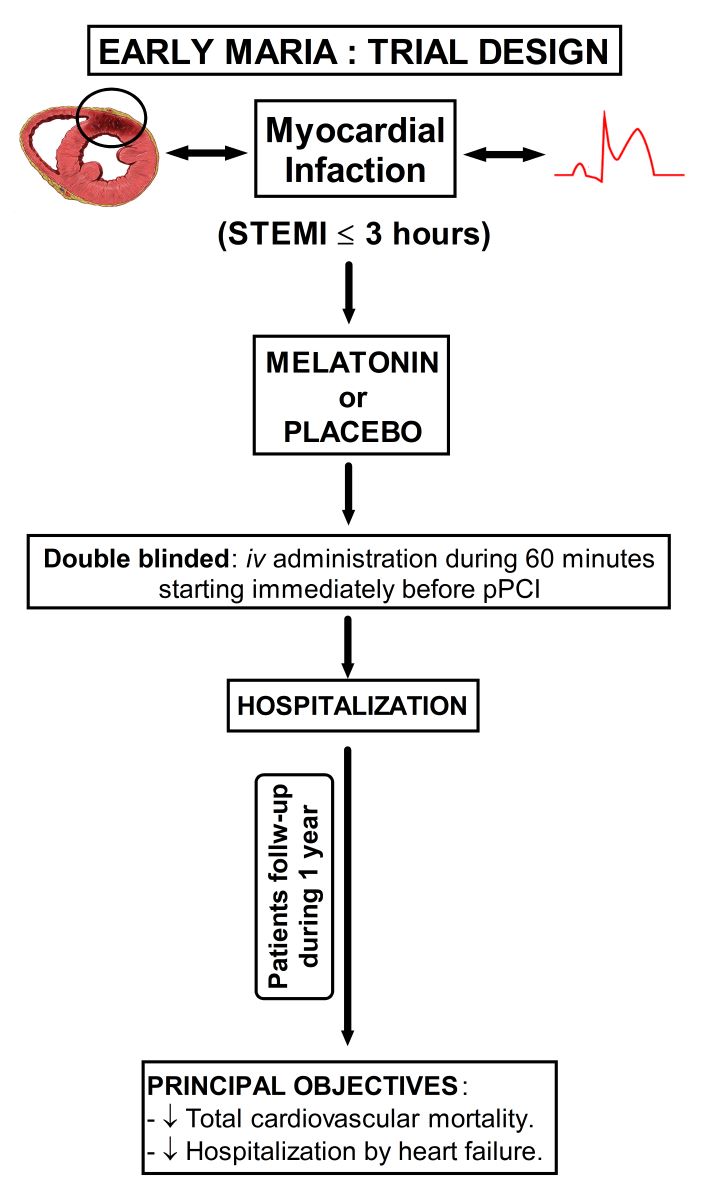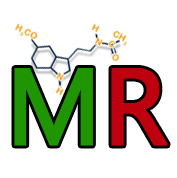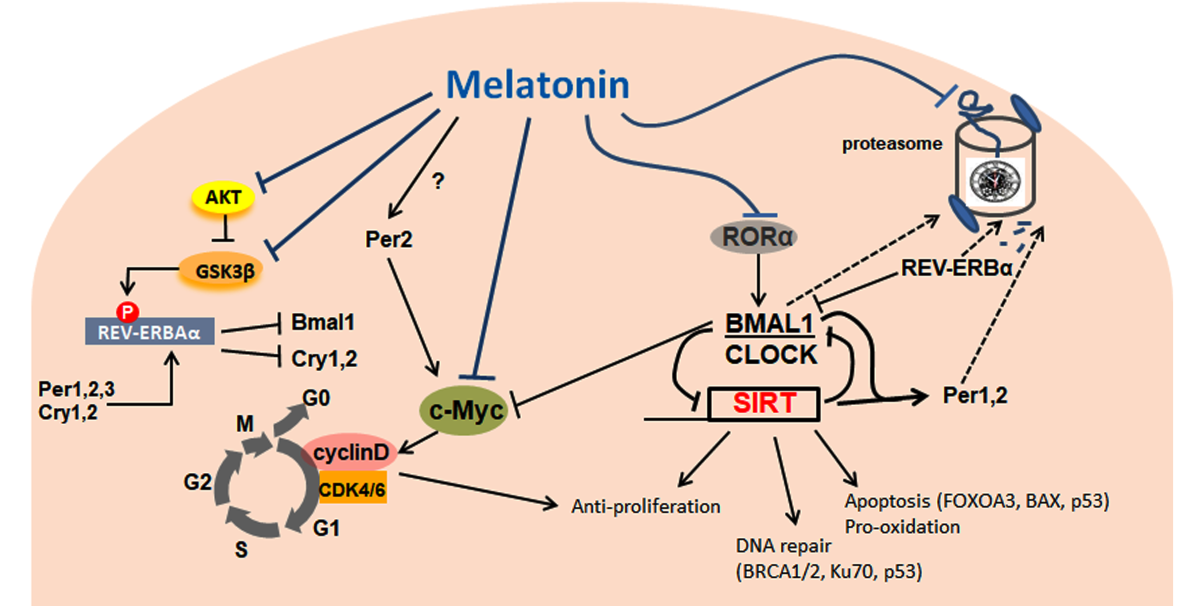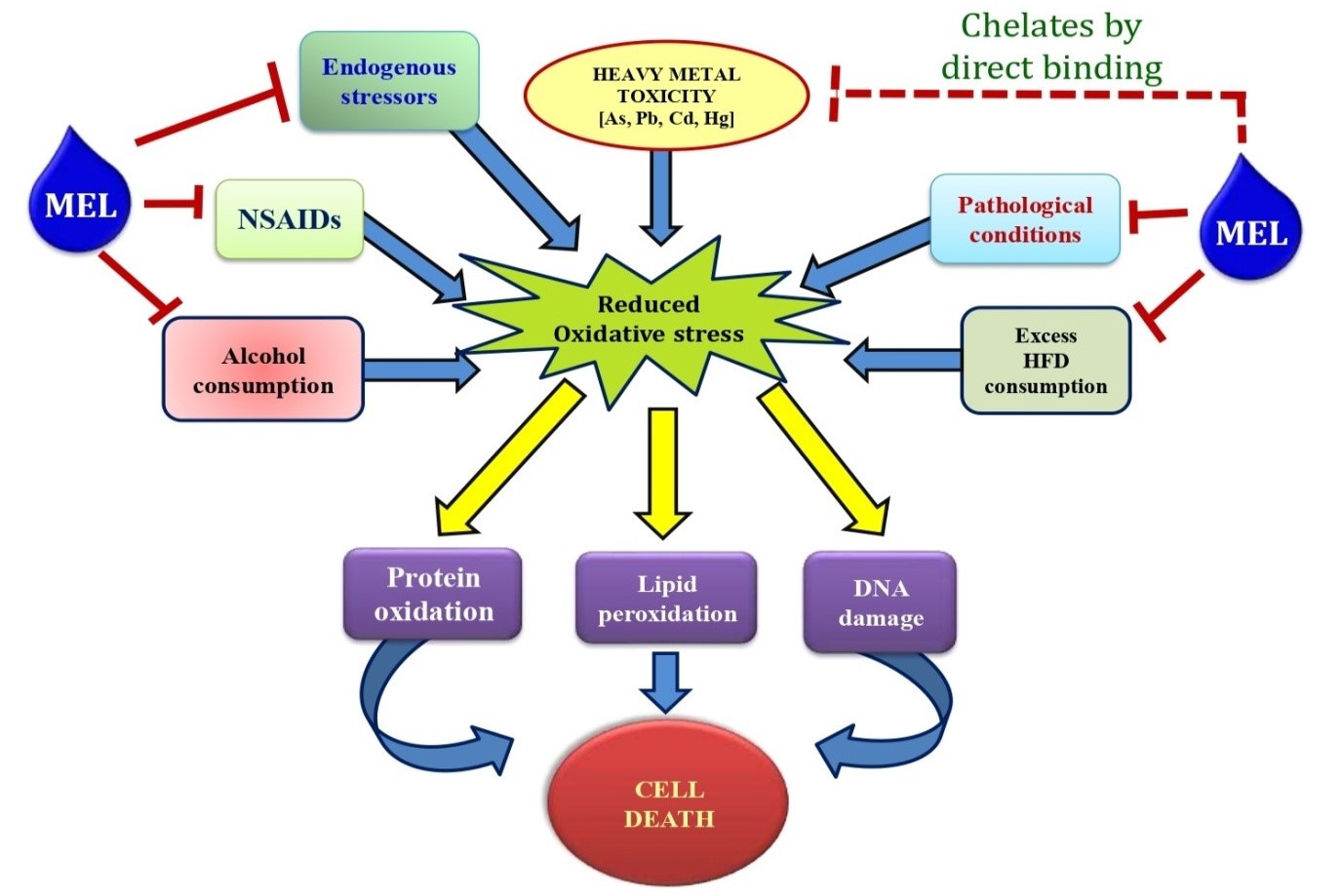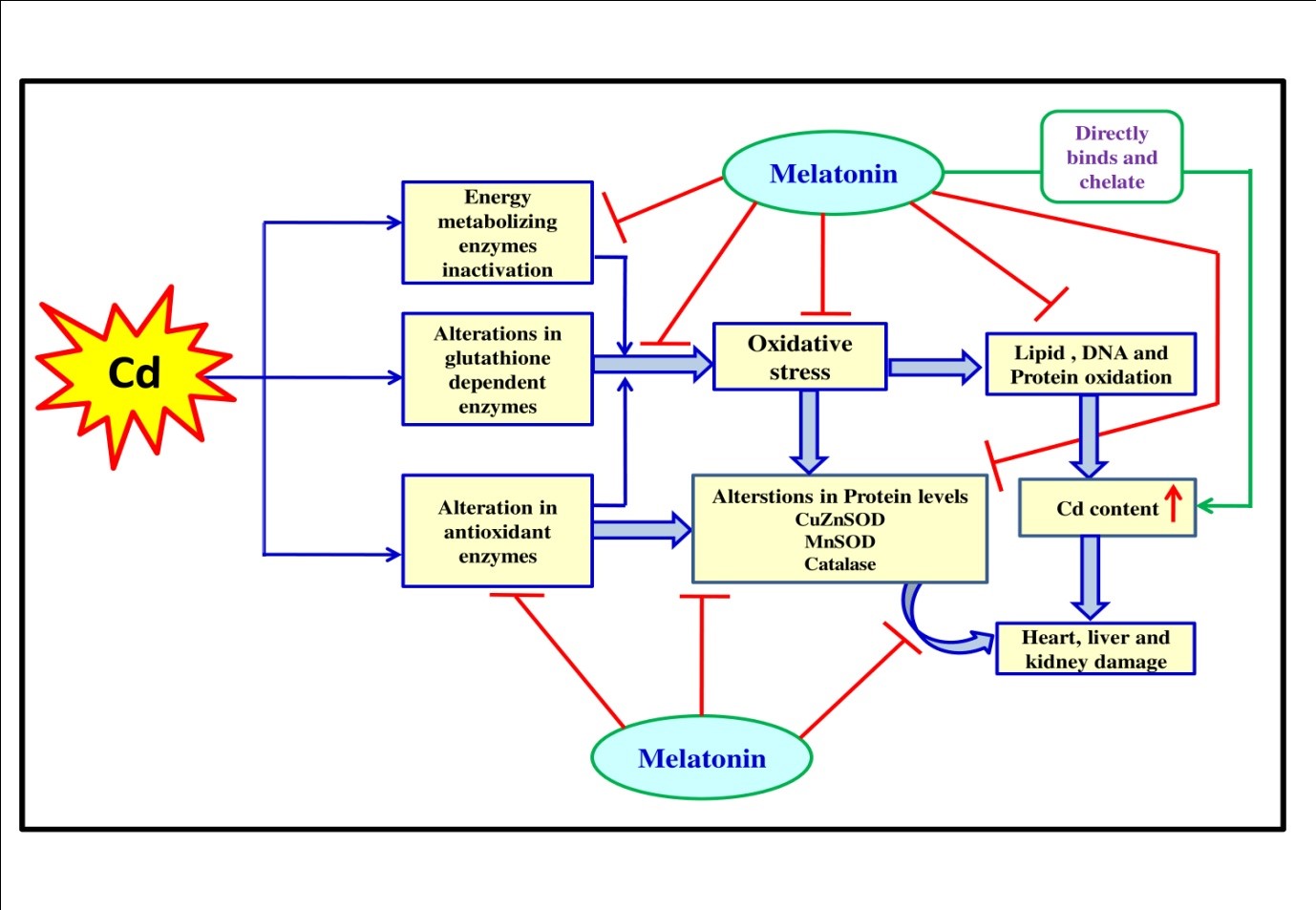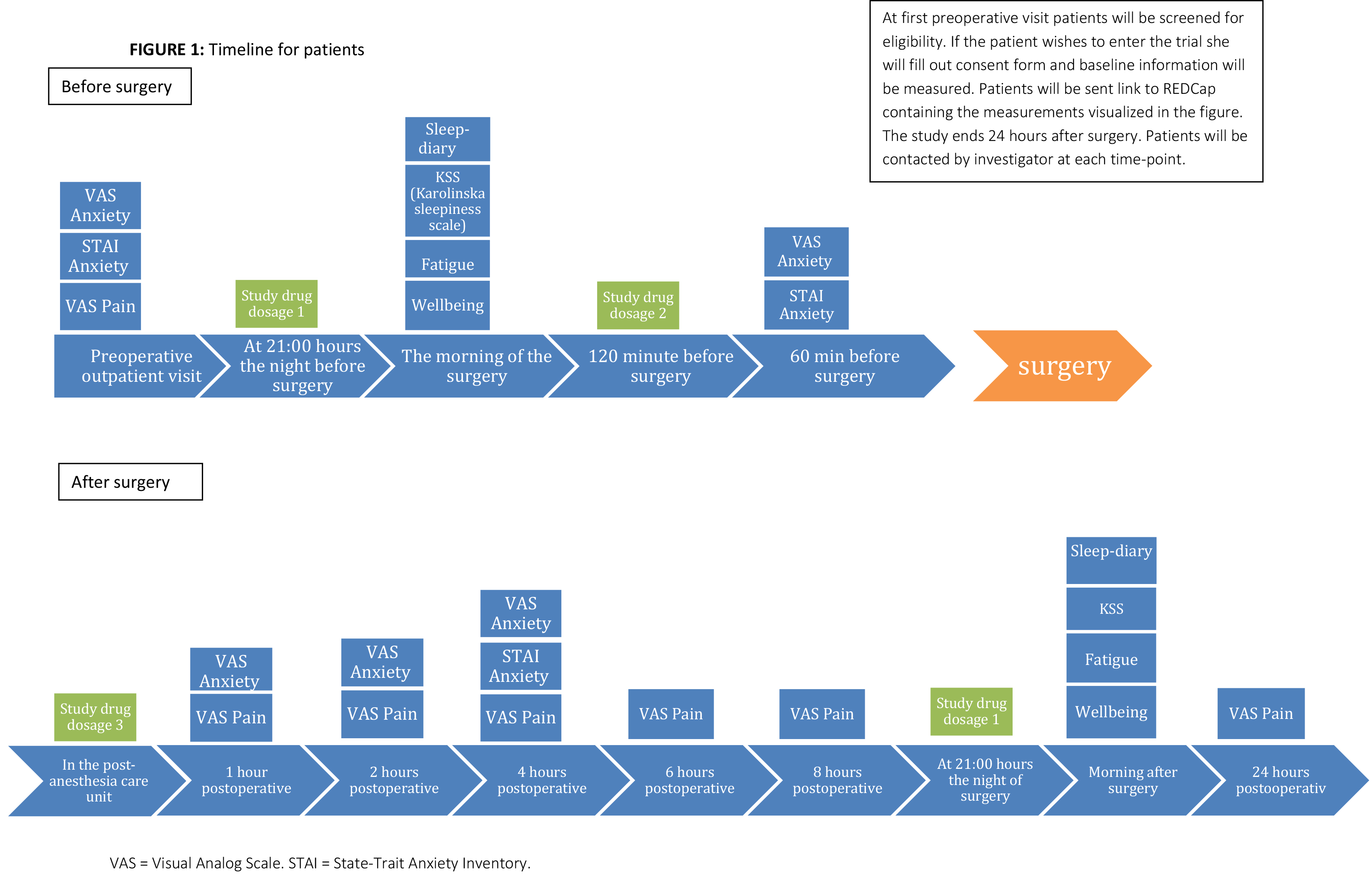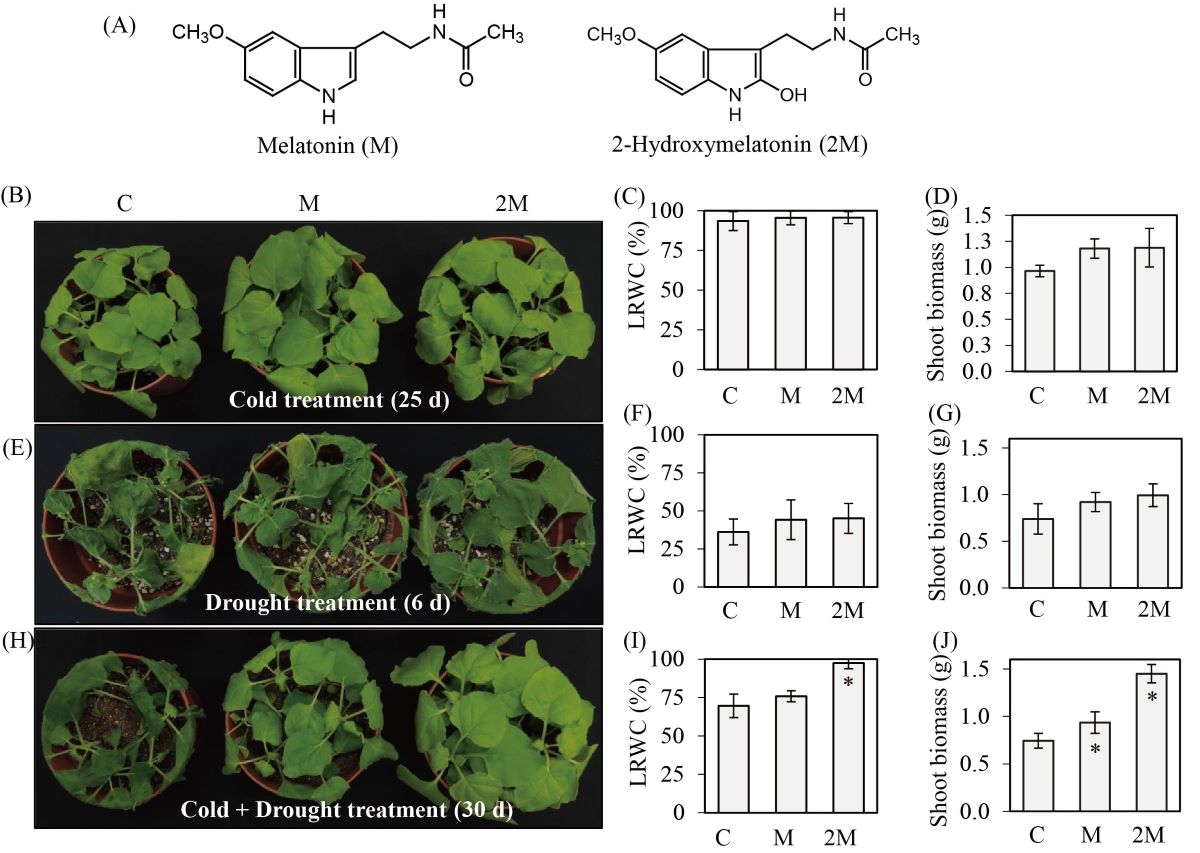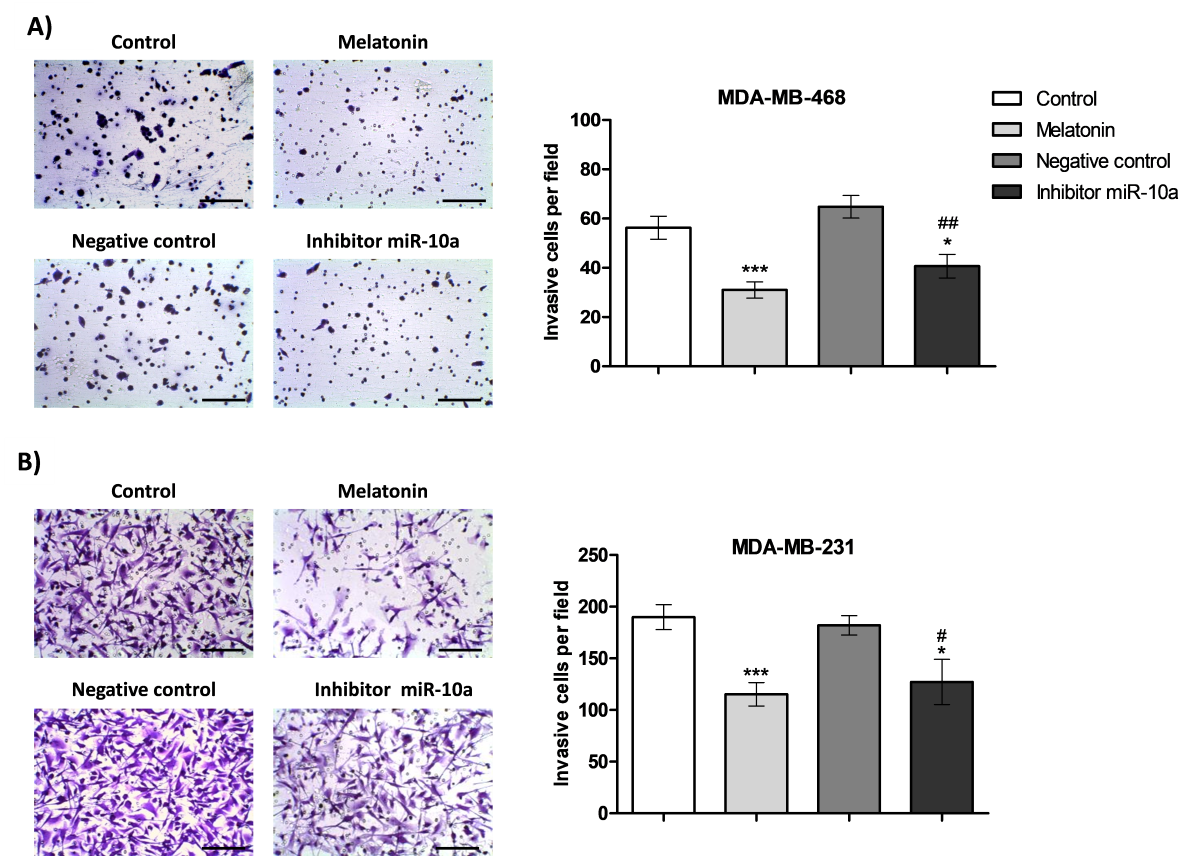
In this issue, Lee and Back publish an article (Lee, H.-J. and Back, K. 2019. 2-Hydroxymelatonin confers tolerance against combined cold and drought stress in tobacco, tomato, and cucumber as a potent anti-stress compound in the evolution of land plants. Melatonin Research. 2, 2, 36-47. DOI:https://doi.org/https://doi.org/10.32794/mr11250020.) in which the authors identified 2-hydroxymelatonin as the major metabolite of melatonin. 2-Hydroxymelatonin is formed from melatonin as a result of the enzymatic activity of melatonin 2-hydroxylase. This enzyme is absent in aquatic plants including cyanobacteria and alga and is present only in land plants. 2-Hydroxymelatonin not only exhibits much higher levels than that of melatonin in plants but it also protects land plants from the combined stressors such as cold and drought.
Based on the observations, the authors propose a very interesting hypothesis. When the aquatic plants transformed into land plants, they faced the common challenges of cold and drought which rarely occur in aquatic environments. Under these combined stressors, melatonin per se could not provide sufficient protection as the data indicate. Thus, the land plants evolved melatonin 2-hydroxylase to generate 2-hydroxymelatonin to overcome the stressors of their terrestrial environments.
The hydroxylmelatonins have also been found in animals; however, they are speculated to be the products of melatonin’s interactions with reactive oxygen species (ROS) and reactive nitrogen species (RNS). Melatonin hydroxylases have not yet been identified yet in animals. The potential functions of hydroxylmelatonins and their synthetic pathways in animals would be interesting topics of exploration.
